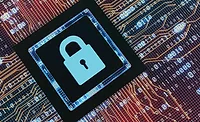Cellular Communications Provide Secure Options for Printer Networks
This well-known industrial printer supplier separates its fleet of printers from industrial plant networks, affording an extra measure of security.

Simplified system network diagram shows the cellular network used for maintenance of Videojet printers. Source: Videojet
Known for its industrial line of printers, Videojet has extended networking options for users who need wireless connections but are squeamish about connecting their printers via just Wi-Fi—or Ethernet cabling—to internal plant or enterprise networks. To get some separation between plant networks and printers on the plant floor, Videojet has come up with a cloud-based solution that connects to plant floor printers via a private cloud network served by a cellular network. The solution is especially geared to servicing and maintaining printers.
The Videojet Customer-Independent Cellular Network (CICN) is an enabling connectivity solution for VideojetConnect Remote Service (VRS). The CICN uses cellular gateways to create a network across a manufacturer’s site and connect its fleet of printers to the cloud. The CICN is completely separate from a customer’s internal plant network.
Why this announcement caught my eye was in preparing for a September feature entitled “Consider Cellular Wireless Networks for Today’s IIoT Systems,” I found that the reliability, security and range of cellular networks have much to offer plant networks today. This is especially the case when Wi-Fi networks are often overcrowded, overworked and not as secure as a cellular system. The fact that Wi-Fi radio-based networks are unlicensed by the FCC means these networks are essentially out of control as there is no governing body to limit the number of transceivers on a single Wi-Fi channel. With cellular systems being licensed, carriers and the FCC work together to minimize interference and maximize usability, reliability and security.
Knowing how important the data is that gets printed on food or beverage packaging, it is no surprise that users may want some protection for their printer networks. Afterall, these are not your typical network laser printer where anyone on the staff can send a print job. And as one expert in my September wireless article pointed out, one good reason for choosing a cellular network is that it is out of reach of the IT department’s hands, which may be good for some manufacturers.
To find out more about the how’s and why’s and the development of Videojet’s CICN, I spoke with Angelo Gagliano, Videojet’s senior solutions engineer for Videojet Digitally Enabled Services covering North America. As an early adopter of VRS, he has been an integral part of the growth and technical development of remote service over the last seven years. He is excited and encouraged by customer adoption of IIoT in the manufacturing and packaging sector.
According to Gagliano, “Our customers appreciate the visibility and proactive maintenance approach that VRS enables but some have struggled to deploy and maintain the solution in their plant networks due to their internal IT and network security restrictions.”
FE: First, what is CICN?
Angelo Gagliano: The Videojet Customer-Independent Cellular Network (CICN) connectivity solution is an alternative to connecting Videojet coding equipment via an in-house network. Rather than relying on an IT team to initiate, support and maintain Videojet equipment connections on a plant’s network, the cellular solution uses integrated cellular panels placed throughout the plant to create a separate local network. Currently testing at 30% better than using a customer’s network in terms of connectivity and printer sustainment, the CICN solution provides extremely high reliability. Since it is entirely independent from any existing network infrastructure, the cellular solution keeps plant network issues from impacting the connection to VRS.
FE: I take it that security was a big issue for food and beverage users—or any manufacturer?
Gagliano: Cellular connectivity provides a very secure and stable connection that is needed to realize the benefits that VRS has to offer. Answering manufacturers’ demand for security and flexibility in their coding and marking solutions, the cellular panel connection is secured with a private APN (access point name), data encryption, a managed firewall and 24/7 traffic monitoring for threat analysis.

FE: We’ve mentioned VRS a few times. What specifically is VRS, and what are its benefits/services?
Gagliano: VRS, VideojetConnect Remote Service, is a web-based dashboard application that aids our customers in maintaining their Videojet equipment fleet. It provides them with a single-source visual dashboard helping monitor consumables and proactive and reactive alerts to reduce printer and line downtime. VRS also provides Videojet with printer-related diagnostics to repair and identify issues efficiently.
FE: Can a production manager on the plant floor, who needs to change the text to be printed on a package on a particular line, do this through VRS? How does that work, that is, what steps does the production manager take? What control options does a manager have over the printers in the network?
Gagliano: VRS is primarily used for printer maintenance and operational improvements. It is not intended for code management. We have other software offerings like CLARiSUITE that customers use for “code assurance,” and message management. We also have add-ons to VRS, such as “VideojetConnect Insight,” that help production managers to track OEE, line downtime and productivity. “VideojetConnect Exchange,” allows customers to import VRS data into their existing operating systems and visual management dashboards. This is accomplished using a secured REST API protocol.
FE: How does a food processor connect printers to VRS? Is Wi-Fi or LAN cabling still used? If so, is it independent of the regular plant network?
Gagliano: Videojet has three ways that a customer can connect their Videojet coding equipment to VRS:
- Using a customer’s wired network. This solution can require network drops at all printer locations and open switch ports.
- Connecting to a customer’s existing Wi-Fi network. A more economical solution than wired but it is limited to Wi-Fi range with their existing access points. Both require network firewall whitelisting.
- The Videojet Customer-Independent Cellular Network (CICN). The CICN uses cellular gateways to build a network independent of a customer’s infrastructure. A customized cellular network broadcasts a hidden Wi-Fi that only Videojet equipment connects to, creating a secure closed network.
FE: If a Wi-Fi network is used to connect printers to the cellular router, how is the Wi-Fi network kept secure? What is its range?
Gagliano: We partner with well-known telecom industry leaders ensuring that we built secure and stable connections. Using strategically placed cellular panels, we are able to cover all of the Videojet equipment at a customer’s facility.
FE: What if cell service is weak at a manufacturer’s site? What are the options?
Gagliano: We perform site surveys to help ensure a good cellular signal and proper Wi-Fi strength to all the Videojet printers. We customize every system to every plant. If there is not sufficient signal, we can still use the customer’s network via wired Ethernet or Wi-Fi.
FE: Who is the cloud service provider? How reliable is it?
Gagliano: We use AWS as our provider for cloud services. The service has an excellent track record with hundreds of thousands of business customers.
FE: Who maintains the additional communications equipment?
Gagliano: The deployed CICN equipment is maintained by Videojet. We are responsible for the connectivity, security, sustainability and any upgrades needed. We perform regular traffic scanning to ensure that all devices on the network are healthy and connected. If an anomaly is identified, we deploy a trained Videojet technician to address it.
FE: How does a printer let a user know that it needs consumables (e.g., ink or toner)? Does it also relay this info to Videojet? Can this type of information be used to make sure a manufacturer doesn’t run out of consumables?
Gagliano: The VRS dashboard provides the customer with a visualization of the printer’s consumables such as ink, makeup, ribbon, labels, etc. The user can see all consumable levels at a quick glance to know when and where they will need to be replaced. In addition, the user can customize alerts that notify via text or email when consumables are low, out or about to expire. They can also set escalation alerts that go to management if action is not taken in a timely manner.
FE: Same question as above, but for parts or wear? Can the system predict when it will need a part due to wear and tear?
Gagliano: VRS has the ability to monitor a variety of Videojet coding equipment wear parts across multiple platforms. We also recognize the importance of predictive analytics and maximizing uptime in manufacturing facilities, and see a natural evolution of incorporating more of that in the future.
FE: Anything I missed that is important?
Gagliano: VRS is just a small part of Videojet equipment connectivity. Connecting a customer’s coding equipment to a network creates endless possibilities in automation and reducing operator intervention, thus supporting error-free coding and increased printer uptime. VRS is just the foundation on which all these future possibilities begin. And thanks to the introduction of the CICN option, we are helping expand accessibility to VRS to manufacturers while ensuring adherence to their most stringent IT policies.
Looking for a reprint of this article?
From high-res PDFs to custom plaques, order your copy today!








